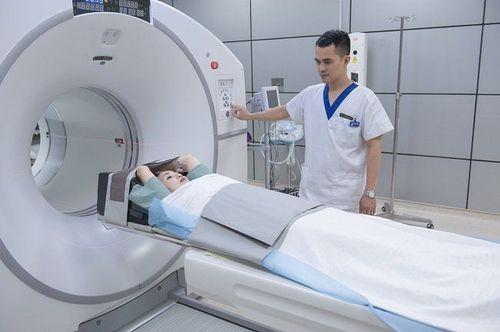This is an automatically translated article.
The article is professionally consulted by Master, Doctor Nguyen Thanh Nam - Radiologist - Department of Diagnostic Imaging - Vinmec Danang International General Hospital.Computed tomography (CT Scanner) is an imaging technique that uses X-rays to create cross-sectional images of parts of the body, including the urinary tract tomography. diagnose urinary tract disease.
This technique gives fairly clear images of the internal organs, especially CT of the urinary system shows more clearly the image of soft tissues than X-rays. Although this method is often performed with many patients when visiting the hospital, not everyone understands the significance of this technique.
1. When is a CT scan of the urinary system needed?
CT urology is a process of examination and tomography of the urinary system including: kidneys, two sides of the ureters, bladder, ... according to the system from the diaphragm to the pubic joint on a low-sequence receiver system.CT scan can be widely indicated to investigate most of the pathologies of the body parts. CT scan of the urinary system will be indicated for the following cases:
Patients with renal colic Having stones in the bladder, kidneys, ureters or ureteral obstruction of unknown cause Kidney trauma Disease Congenital disorders of the urinary system (double kidney, horseshoe kidney, strictures of the ureteropelvic junction,...) There is disease in the seminal vesicles, prostate Infected in the perirenal space and renal parenchyma Infectious diseases urinary tract infection or pyelonephritis, cystitis, nephritis. It is necessary to determine the stage and status of kidney tumors. Assess the development of urinary system tumors, prostate tumors. Complications are very rare with CT scans, and in rare cases an allergic reaction to the contrast medium can be treated immediately. Contrast can cause kidney damage but is very rare, mostly only in patients with pre-existing kidney disease.
For pregnant women, if it is not necessary, do not have a CT scan because X-rays can affect the fetus.
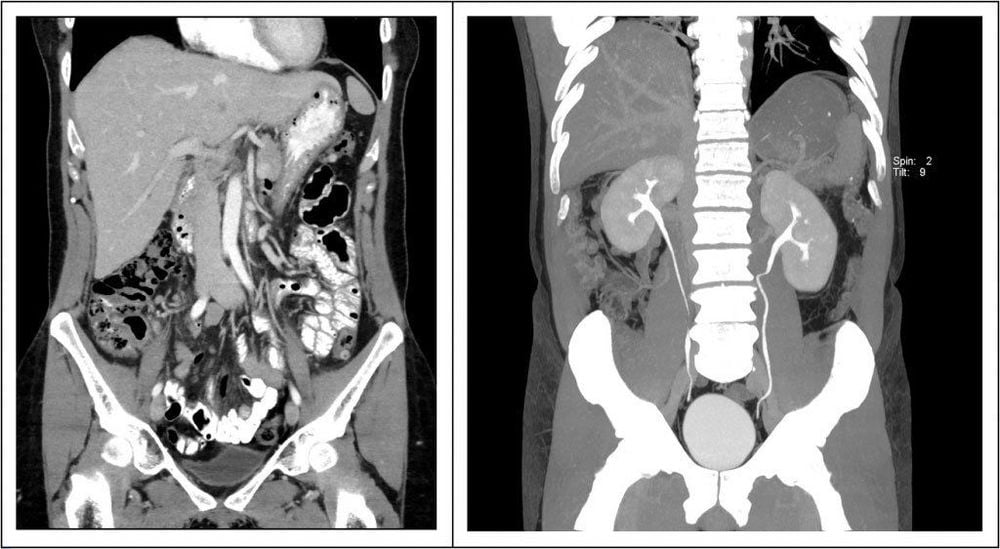
Hình ảnh CT hệ tiết niệu
2. Urinary system CT scan procedure
2.1 Before having a CT scan, a female patient should tell her doctor whether she is pregnant or not. If the patient has a contrast scan, it is necessary to report the medical conditions being treated (diabetes, high blood pressure, asthma, thyroid disease, a history of severe allergies...) Remove all jewelry and needles. Removed from the body For CT scan of the urinary system, the patient needs to fast with solids, it is best to drink only fruit juice or milk with a volume of not more than 100ml. 2.2 During CT scan The patient lies in supine position, arms raised above head to avoid image noise. The technician teaches the patient how to hold their breath to avoid creating noisy breathing movements. Perform a CT scan of the urinary system before and after intravenous iodinated contrast injection. The patient lies still during the scan. Depending on the size of each individual, change the viewing angle accordingly. Perform a complete assessment of air, soft tissue, bone, and fat in the imaging area.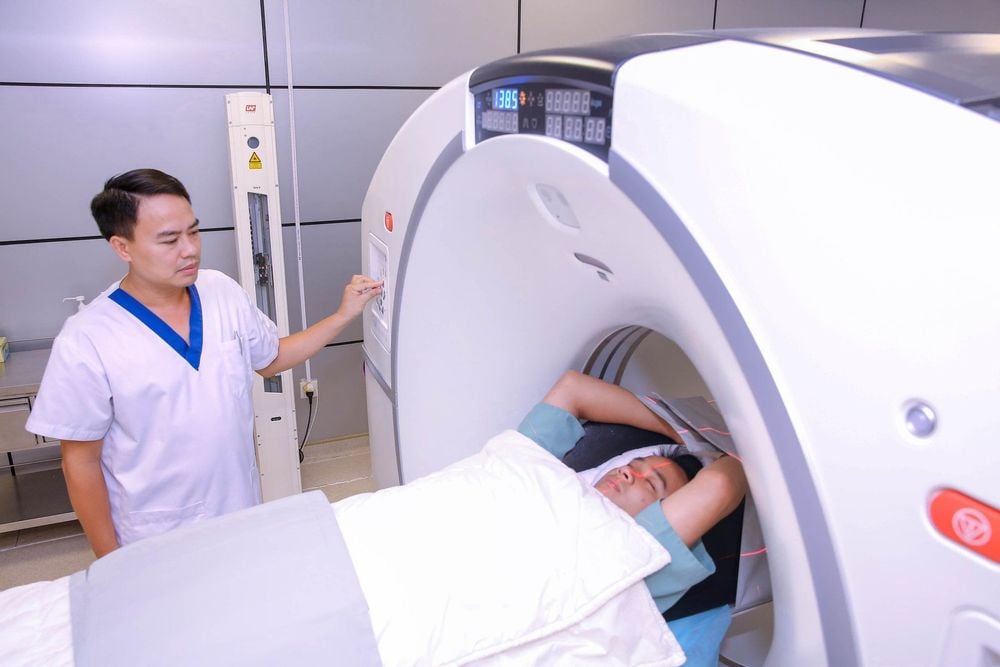
Chụp CT hệ tiết niệu tư thế nằm ngửa
3. Meaning of CT Scanner classes
Take the sections before contrast injection This step is aimed at locating the initial lesion to make the post-injection sections more efficient. At the same time, it helps to assess whether the lesions contain fat or calcification, bleeding or not. In addition, this scan also helps to compare with the density of the lesion after drug injection, thereby assessing the extent of enhancement more or less of the lesion.Arterial tomography (renal cortical phase) The purpose of this scan is to evaluate the vascular richness of the tumor lesion, evaluate the state of drug leakage if there is bleeding due to kidney injury . Simultaneously show the status of early venous drainage for arterial or venous catheterization,...Evaluate the excretory capacity of the renal cortex.
Venous phase tomography (parenchymal phase) The purpose of this scan is to evaluate lesions in fast or slow drug-refusing tumors. Assess the enhancement status of the renal veins and inferior vena cava for renal tumors, thereby looking out for lesions such as contusion or parenchymal rupture in trauma. Assess the renal medulla's ability to remove drugs.
Delayed resection classes (excretion) Evaluate pyelonephritis, ureter, bladder and related abnormalities. Depending on the pathology of the urinary tract and the ability of the kidneys to excrete it, it is possible to determine the time of the scan later.
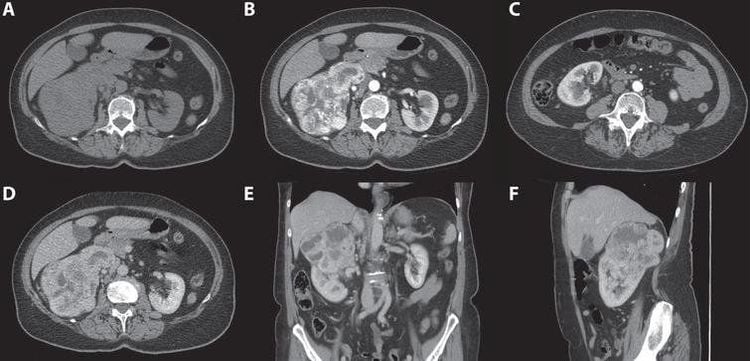
Các lớp chụp CT Scanner thận - tiết niệu
4. The role of CT scan in diagnosing urinary system pathology
Computed tomography (CT) is the best imaging method to evaluate the urinary system and retroperitoneal space because:No surgery is needed, but the urinary system and other abdominal organs can still be visualized. Density measurement and support to differentiate fluids, blood, calcifications, fat, necrosis,... Forming detailed cuts along the body axis from the kidney to the prostate gland. Display images in all different planes or 3D images to help observe the renal pelvis, parenchyma, excretory lines, ureters, prostate, bladder. Contrast is injected into the body to help differentiate structures, study renal vasculature, and evaluate rich, poor, or avascular lesions.
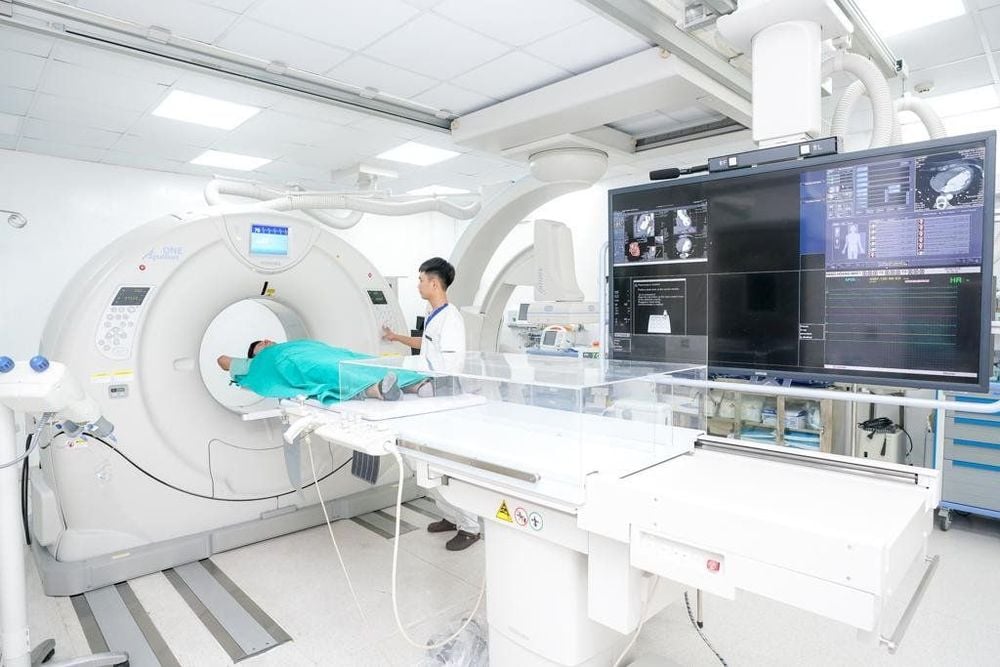
Chụp cắt lớp vi tính CT tại Vinmec với máy CT 640 lát
Master Doctor Nguyen Thanh Nam used to be a Lecturer in Diagnostic Imaging, Hue University of Medicine and Pharmacy with good English and Russian skills and over 10 years of experience in the fields of Diagnostic Imaging.
For advice and answers to all questions related to the CT scan to diagnose urinary tract diseases as well as the medical examination and treatment process at Vinmec, please come directly to Vinmec Health System or register for a medical examination. online HERE.
Recommended video: PET/CT: The golden key in the fight against cancer
SEE MORE
CT brain scan: What you need to know Notes on CT lung CT Abdominal CT scan: What you need to know







